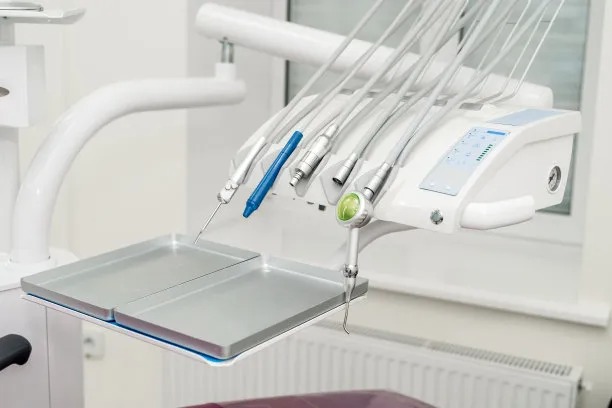Understanding the Reasons and Process Behind Why You Might Need to Extract a Tooth for Your Dental Health
Summary: Tooth extraction is a procedure that many individuals may dread, but understanding its necessity can help alleviate concerns. This article explores the critical reasons behind why tooth extraction might be needed for maintaining optimal dental health. We will delve into common reasons for extraction, the associated medical conditions, the process involved in the procedure, and what to expect during recovery. By providing a comprehensive overview, this article aims to educate readers about the importance of this dental practice and how it can lead to improved oral health, ensuring a more confident smile.
1. Common Reasons for Tooth Extraction

Tooth extraction may become necessary for a variety of reasons, with dental decay being one of the most prevalent causes. When a tooth becomes significantly damaged or decayed, saving it may not be feasible. In such cases, extraction helps to prevent the spread of infection and protects surrounding teeth.
Another common reason is overcrowding. In many instances, dental professionals find themselves needing to extract teeth to make space for orthodontic treatment. This is particularly relevant in cases where the mouth lacks enough room for all teeth to align properly, leading to potential misalignment if not addressed.
Lastly, severe gum disease, or periodontitis, may necessitate tooth extraction. When gums become infected and the supporting bone deteriorates, the structural integrity of the tooth is compromised. Extraction becomes essential to safeguard overall oral health and to prevent further complications.
2. Medical Conditions Leading to Extraction
Medical conditions can also lead to the need for tooth extraction. For example, patients undergoing cancer treatment, such as chemotherapy or radiation, may find their dental health compromised. In such cases, infected or weakened teeth are often removed to minimize the risk of complications and infections during treatment.
Osteoporosis, a condition that weakens bones, can also contribute to dental issues. When the jawbone becomes less dense, it may not be able to adequately support teeth, leading to the necessity for extraction to maintain oral health.
Another significant medical factor is the development of cysts or tumors in or around the oral cavity. These growths can cause disruption to tooth structure and health, making extraction a viable option to prevent further health issues.
3. The Tooth Extraction Process Explained
The tooth extraction process begins with a thorough dental examination and imaging to assess the condition of the tooth and surrounding area. Once a decision is reached, the dentist will discuss anesthesia options to minimize discomfort during the procedure. Local anesthesia is commonly used, although sedation options might be available for those with dental anxiety.
During the extraction, the dentist carefully loosens the tooth using specialized tools, ensuring that surrounding tissues remain as unharmed as possible. Once the tooth is removed, the area is cleaned and prepared for healing. Stitches may be necessary to close the extraction site and promote faster recovery.
Post-procedure, the dentist will provide specific aftercare instructions, which may include recommendations for pain management and dietary restrictions. Proper care following the extraction is essential to prevent complications, such as infection or dry socket, which can delay healing.
4. Recovery After Tooth Extraction
Recovery after tooth extraction is generally straightforward but requires adherence to specific guidelines for optimal healing. Patients are advised to rest and limit physical activities for the first few days post-extraction while monitoring any signs of excessive bleeding or swelling.
Diet plays a critical role during recovery. Soft foods are highly recommended in the initial days following surgery to prevent irritation of the extraction site. Foods like yogurt, mashed potatoes, and smoothies can provide nourishment without disrupting the healing process.
Lastly, maintaining oral hygiene is important even after an extraction. However, patients should avoid brushing the extraction site directly for the first few days. Gentle rinsing with warm salt water can aid in keeping the area clean without causing irritation.
Summary:
Understanding the reasons and process behind tooth extraction can significantly ease the anxiety many feel regarding this common dental procedure. From dental decay and overcrowding to medical conditions that necessitate extraction, awareness is key to making informed decisions about oral health. Additionally, understanding the procedure and recovery allows patients to prepare adequately and promotes a smoother healing process.
This article is compiled by Vickong Dental and the content is for reference only.



